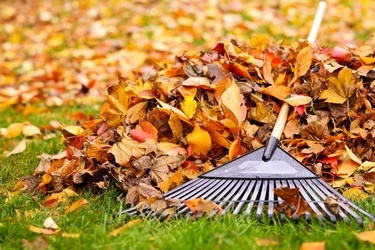When your eyes begin to water, your nose begins to run, and your throat becomes scratchy, you know all too well that the allergy season is upon you. By now, you may have already determined many of your allergy triggers such as dust, or pet dander. But, there are a plethora of allergens all around us, and they are not always readily obvious. If fall weather typically comes with a side of allergies, the following may be the culprits to blame.
Ragweed and Fall Allergies
Ragweed is the most common source of fall allergies, resulting in bouts of allergic rhinitis that are commonly referred to as “hay fever.” From August to November, the plants bloom and produce a fine, powder-like pollen into the air. This pollination hits its peak around mid-September, but it can leave allergy sufferers sniffling and itching for weeks or even months at a time.
Allergies Due to Weather
If you aren’t a fan of the cold, you may enjoy an unseasonably warm fall and winter. However, these lingering temperatures could very well be contributing to bothersome allergies. The cooler, dry air associated with the later months of the year are actually useful for suppressing mold, which thrives in warmer, humid environments. However, when warmer weather lingers, we don’t get the usual reprieve, and allergic reactions due to mold can increase.
Fall Leaves and Allergies
Keeping the yard tidy during the fall months can be a hazard for allergy sufferers. Those piles of dead leaves are more than a task to be undertaken, they are often a haven for mold and pollen. Mold, in particular, can thrive in such an environment, where it is moist, warm, and decaying leaves provide a perfect food source. As you rake, all of your allergens are stirred up around you, and symptoms quickly worsen. Of course, you don’t want to ignore your yard blanketed with foliage. Instead, have someone else undertake the task or wear a mask while cleaning them up yourself.
Allergies Related to School
With fall comes the beginning of a new school year, and for parents and teachers alike, plenty of potential allergens. In the classroom, chalk dust or dander from classroom pets can stir up allergic rhinitis. And, in the cafeteria, potential food allergies await. Steering clear of these can mean taking prescription or over-the-counter medications, and for any parent whose child has the potential to suffer a severe allergic reaction, meetings with teachers and the school nurse should take place at the beginning of the year to develop a plan of action should an emergency arise.
If you are among the millions who suffer from fall allergies, the help of an ENT physician can go a long way. By helping you identify your allergy triggers and finding the best treatment option to keep them under control, you can enjoy the latter months of the year to the fullest, without sniffling, watery eyes, or a scratchy throat keeping you sidelined. Contact the Lane ENT Clinic and request an appointment with Dr. Vaughn to get your allergies under control.
6110 Main Street, Suite D
Zachary, LA 70791
(225) 286-4847




